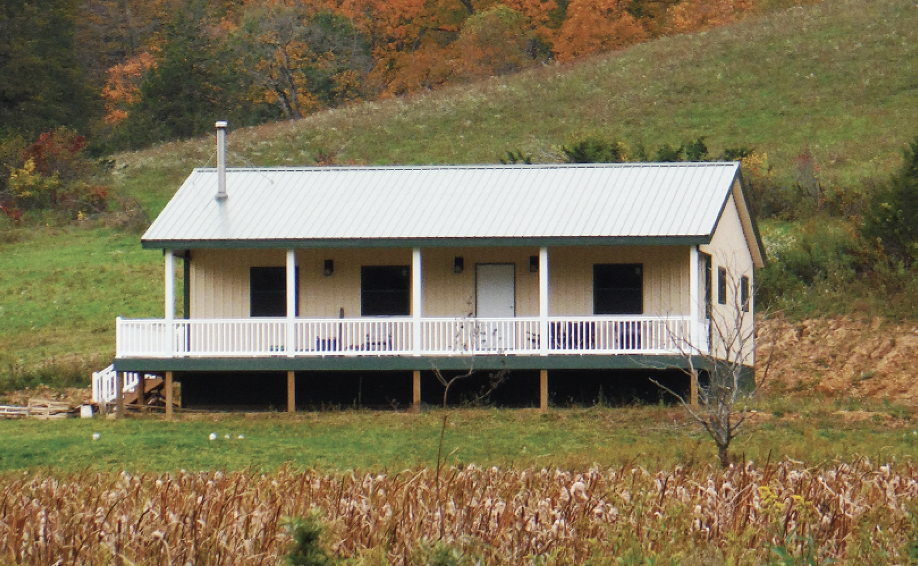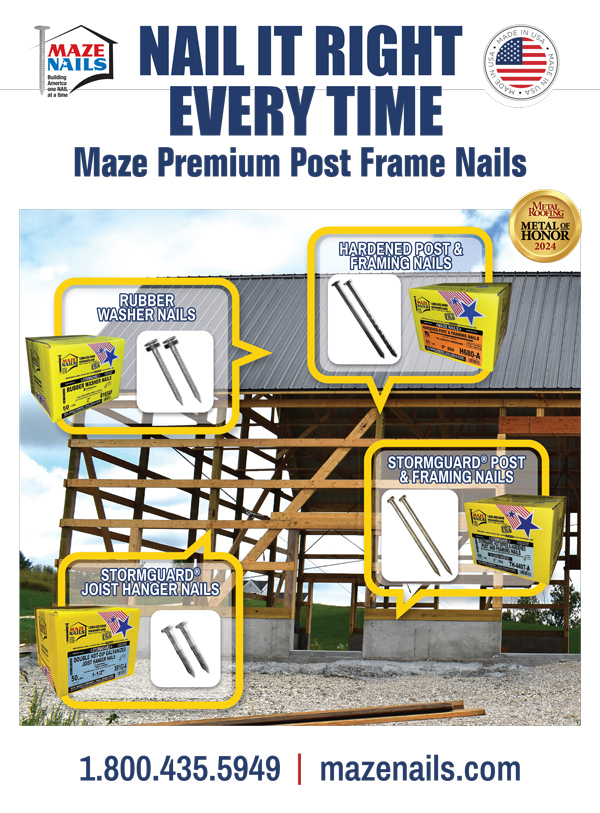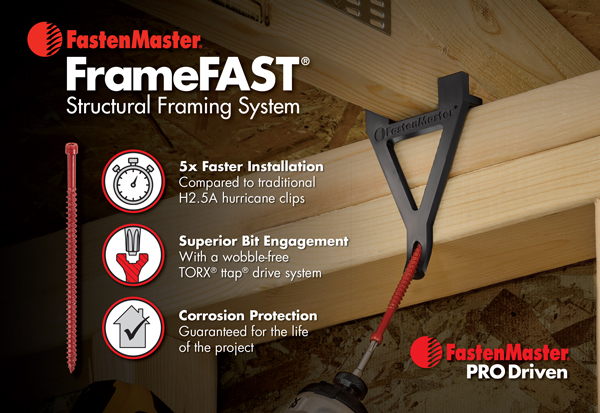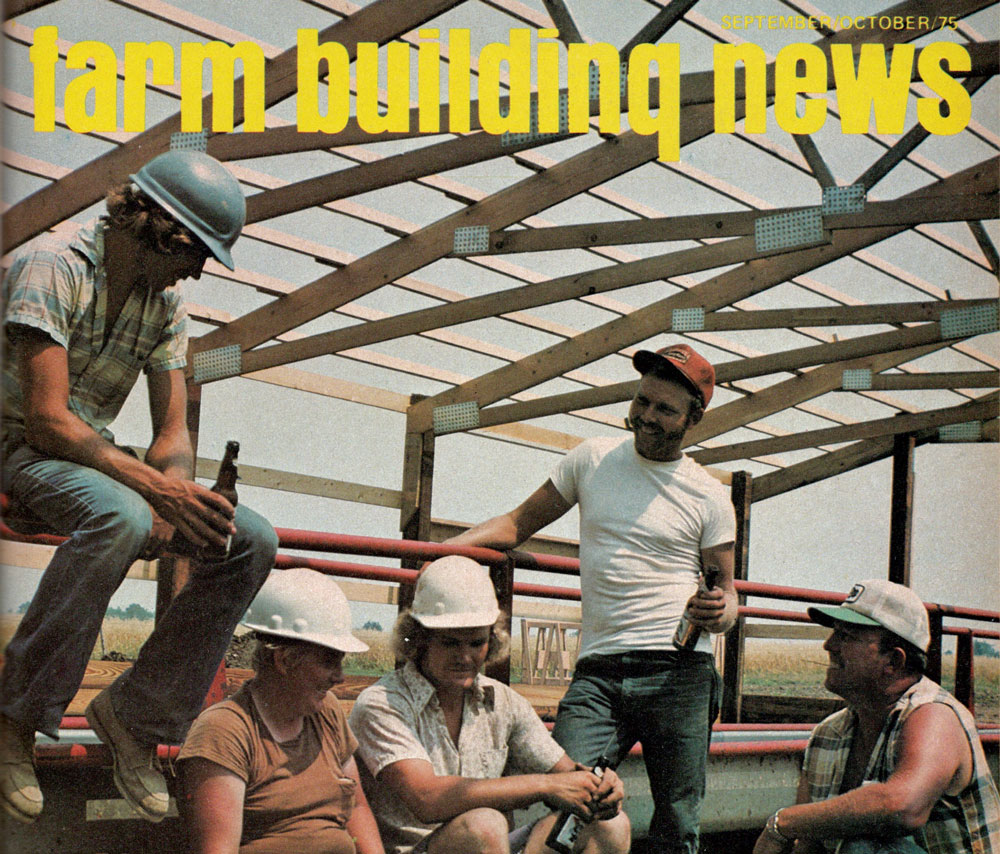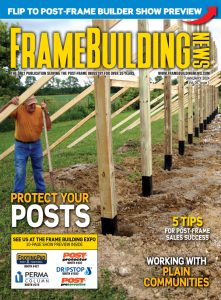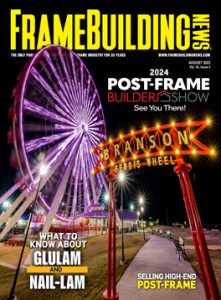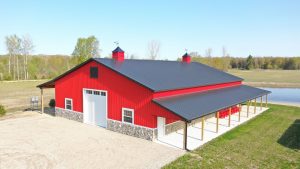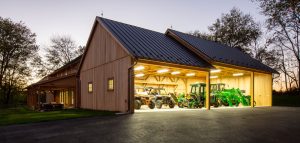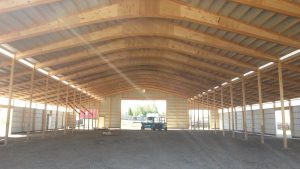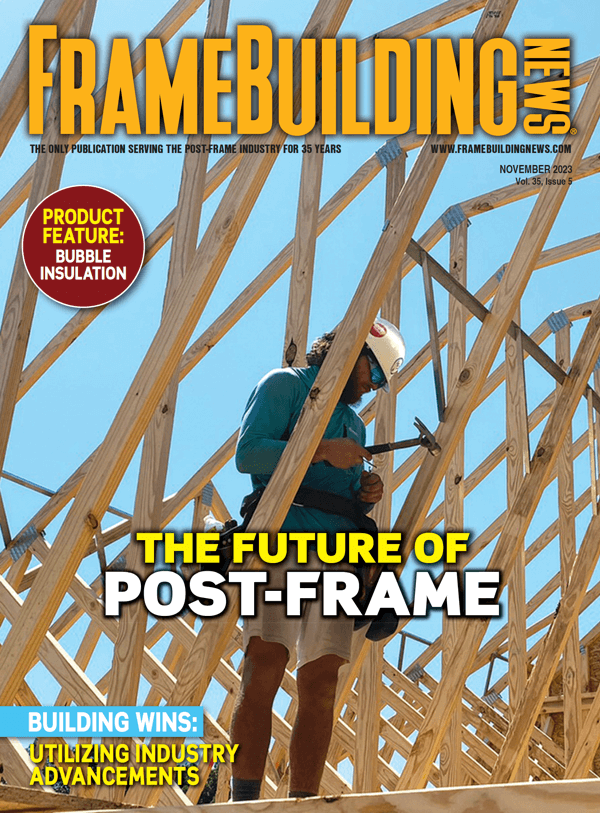By Mike Momb, Hansen Pole Buildings
When I first began selling pole barn kits in Oregon, back in 1980, there was almost universally no permit required for farm buildings. As our service area expanded into states such as California and Nevada, engineering was required in most instances. However, there was never a concern about a pole building not being approved for use in any jurisdiction.
There were some “tough” building departments. Most providers and builders refused to even quote permitted pole buildings within Multnomah County, Oregon or King County, Washington — Just because they involved engineering and had plans examiners who were actually engineers themselves.
As our Pacific Northwest pole building industry evolved and expanded, we knew we had clients who were bootlegging our buildings into homes, but it wasn’t until I built a shouse (shop/house) for myself in rural Spokane County, Washington nearly 30 years ago, where I actually participated in a post-frame building specifically designed for residential use.
In recent years, there has been an explosion of barndominiums across our country — many of these being post-frame homes. And why not? Post frame offers so many benefits over limitations of what is considered to be a more traditional structural system — stick (or stud wall) framed.
Perhaps stick-built construction’s biggest advantage is builders and tradespeople are very comfortable working in and around stick framing. All registered architects and most building inspectors are very familiar with stick framing. The 2018 International Residential Code (IRC) provides a prescriptive “cook book” to follow for adequate structural assembly, within certain limitations. These include, but are not limited to, no story height of greater than 11’ 7” (R301.3.1), no hurricane prone areas with a design wind speed of 130 mph or greater located south of Virginia, or 140 mph elsewhere (R301.2(5)B), and no ground snow loads over 70 psf (R301.2.3).
IRC802.10.2.1 further limits truss spans to a maximum of 36’ and building lengths to 60’ (measured perpendicular to truss span). Trussed roof slopes must be at least 3:12 and no greater than 12:12.
Wood is a very forgiving building material and, even when mis-cut, replacement material is usually only a short drive away. America’s home building industry has built traditional, wood stick frame homes on site for decades.
Many builders, architects, carpenters and other subcontractors prefer to work on stick built homes as compared to alternative building systems, as it is what they are familiar with.
Because traditionally framed houses are so popular, dimensional lumber and stick-built framers are readily available.
Another advantage of stick-built homes is they allow for a great level of design freedom. One can design a home with various ceiling heights, angles and curves, niches and other details. Stick framing is one way to achieve those unique details at a fairly affordable cost.
Despite its popularity, stick framing does have some drawbacks. Because stick built homes are assembled outside, over several weeks, framing lumber is subject to outside moisture. If lumber gets too wet, it can shrink and warp as it dries and cause cracks in the attached drywall. This shrinking and warping can also make it difficult to properly insulate. To decrease risks of potential moisture problems, exteriors are covered with an appropriate and well-sealed weather resistant barrier and lumber should be properly dried before drywall and insulation are installed.
Another drawback of a stick-built home is it usually takes several weeks to complete framing. Total amount of time it will take will obviously depend on the size and complexity of house plans and size, experience and availability of any particular framing crew.
A framing crew must precisely cut, assemble and erect framing components sometimes in adverse weather conditions. Working around adverse weather conditions is another challenge with stick framing.
Post-frame homes can save thousands of dollars in excavation, footing and foundation forming and concrete costs inherent to stick framing. This is due to use of isolated widely spaced wood columns either embedded or placed into brackets on concrete piers. Post-frame construction allows greater flexibility of design for wide door and window openings without requiring structural headers. It has fewer framing members touching both exterior and interior surfaces, reducing thermal transference issues. Deep wall cavities and use of raised heel trusses provide for an ability to super insulate. Material use is minimized by elimination of redundant members so often found in stud walls. Add to this: An average physically capable person, who can and will read instructions, can successfully erect their own beautiful home.
Today’s fully engineered post-frame homes are not your grandfather’s pole barn. Although steel siding and roofing will prove to be more cost effective and durable than any other cladding materials, any exterior surfacing is possible. As an example, one of our clients is building on Lake Havasu, Arizona with a concrete tile roof and stucco for exterior wall finishes.
There are jurisdictions sadly attempting to prevent “pole barn houses” in their neighborhoods. Scenarios usually go something like this: A potential homeowner inquires to their local building permit issuing authority and asks, “Can I build a pole barn home here?” Too often (in my opinion, one time is too often) the answer is a flat “no.” Most of those who do move forward, automatically default to an easy route and build with stick frame instead.
What is not being asked by these potential post-frame home owners is, “Can you provide your written ordinance prohibiting fully engineered post-frame homes?”
Use of terms such as “pole barn” or “pole building” home, barndominium, shouse or shop/house oftentimes cause permitting waters to become clouded. Presenting as a “fully engineered post-frame home” dramatically decreases initial resistance.
My personal experience is well over 90% of these jurisdictions have no such written ordinance. And if it is not in writing, and duly approved by an elected governing body, then it does not exist. When pointed out no written prohibiting ordinance exists, this has always resulted in approval.
In those rare instances where an adopted written statute does appear, I have often appealed to legal counsel for the jurisdiction. I politely explain, in trying to rule out a 100% Code conforming structuring building system, they are attempting unlawfully to restrict free trade and this could result in a protracted (and expensive) legal battle they cannot win. Municipalities do not want to have to explain to their constituents how good money was thrown after bad. For me, in all but a single instance, this has resulted in approval to move forward.
Other courses of action would include taking this issue to the jurisdiction’s governing body (city/town council or county commissioners) and requesting their statute be overturned or amended. This can proved to be a lengthy process as the wheels of progress move slowly.
Now my one single (and ongoing) challenge: Madison County, Illinois. In their Ordinance #: 2020-02 “Ordinance authorizing a text amendment to Chapter 93 of the Madison County Code of Ordinances”:
93.025 “R-1” THROUGH “R-4” SINGLE-FAMILY RESIDENTIAL DISTRICTS
(F) “R-1”, “R-2”, “R-3”, AND “R-4” Permitted uses.
(5) Single-family dwelling, frame construction only.
Madison County’s Planning and Zoning Department’s position is “frame” means stick frame only. I have reached out to Madison County State’s Attorney’s Office and as there is no pending actual permit application, they feel there is no compelling reason to address this issue.
Planning and Zoning Departments can regulate things such as setbacks, building footprints, heights, siding and roofing materials, even colors! However, it is unlawful to preclude any Code approved, engineered structural building system.
In my humble opinion, we will see entire subdivisions filled with post-frame homes, as affordable housing becomes less and less affordable. FBN
Mike Momb has been Technical Director for Hansen Pole Buildings, LLC of Browns Valley, Minnesota for 19 years. His daily post-frame blog, as well as his weekly “Ask the Pole Barn Guru” column can be followed at www.HansenPoleBuildings.com/blog/.


